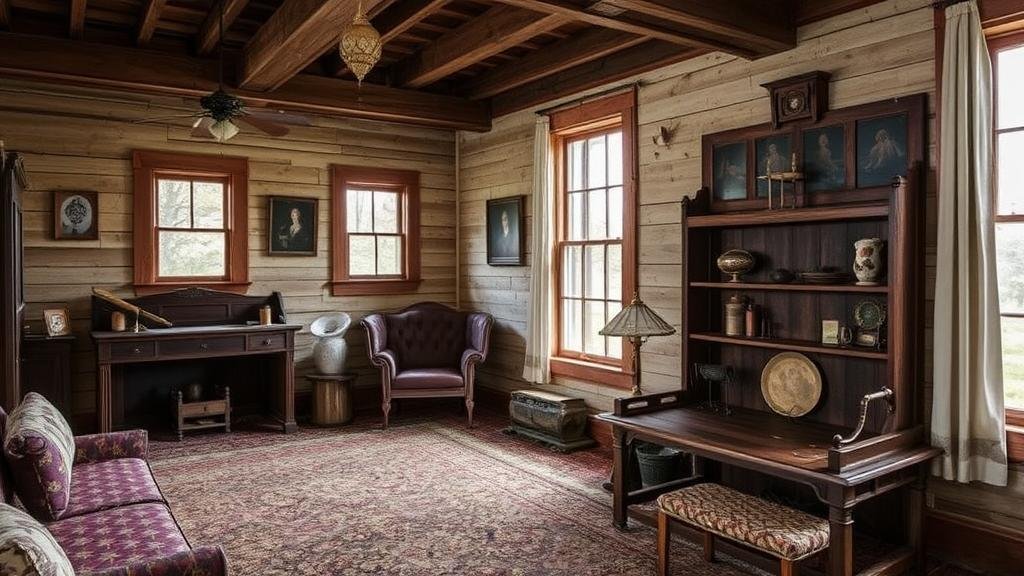Rediscovering Forgotten Relics in Abandoned Stagecoach Inns
Rediscovering Forgotten Relics in Abandoned Stagecoach Inns
The study of abandoned stagecoach inns presents a unique perspective on American history and culture, particularly during the 19th century when westward expansion was at its peak. These establishments served as crucial rest stops along expansive routes, catering to travelers and commerce alike. This article delves into the historical significance, architectural features, and archaeological relevance of these establishments while highlighting recent discoveries that shed light on their forgotten past.
Historical Context
Stagecoach inns proliferated throughout the United States during the 1830s to the 1880s, coinciding with the development of the Overland Trail and the United States Postal Services implementation of stagecoach routes. For example, the Pony Express, which operated between April 1860 and October 1861, relied on these inns for lodging and supplies. Abandoned sites such as the Old Santa Fe Trail Inn in New Mexico and the Harpers Ferry Tavern in West Virginia are quintessential examples of the eras infrastructure.
Architectural Features of Stagecoach Inns
The architectural style of stagecoach inns typically reflects the vernacular designs of the period, often constructed using local materials. Key features include:
- Extensive verandas, designed for relaxation and social interaction.
- Large common rooms to accommodate multiple travelers.
- Stables or barns nearby for housing horses.
For example, the Bozeman Stage Station in Montana, built in 1864, exhibits a timber-frame structure with a gabled roof, showcasing the aesthetics and functionality that were essential for the travelers of its time.
Archaeological Significance
Archaeology at these sites allows researchers to reconstruct past lifestyles and social conditions. In recent years, excavations at the Spanish Peaks Inn in Colorado have uncovered artifacts such as old coins, ceramics, and writing tools, providing invaluable insights into the daily lives of innkeepers and their patrons.
Rediscovering the Past: Case Studies
Several notable projects have successfully unveiled the hidden histories of these forgotten inns. The Stagecoach Inn Restoration Project in New York has focused on the preservation of the 1750s structure, uncovering layers of paint and décor reflective of the Colonial period. Also, studies conducted by the Institute of Archaeology and Preservation in California highlighted findings from the Butterfield Stage Station, which illustrated the interactions between Native Americans and settlers.
Modern Implications and Applications
The significance of rediscovering stagecoach inns extends beyond academic curiosity. e sites present opportunities for tourism, particularly in heritage and eco-tourism contexts. For example, the restoration of the Pioneer Stagecoach Inn in Oregon has drawn increased visitor traffic, stimulating local economies and preserving cultural heritage.
Challenges in Preservation
Despite the potential benefits, the preservation of these historic sites often faces significant challenges, including:
- Natural decay and vandalism.
- Funding limitations for restoration efforts.
- Competing land-use interests from development.
Successful conservation requires collaboration among historians, archaeologists, and local communities to create sustainable plans for maintaining these architectural treasures.
Conclusion
The investigation of abandoned stagecoach inns serves as a lens through which we can view the complexities of American history. These structures are more than mere relics; they encapsulate the spirit of adventure, commerce, and social interaction of their time. Ongoing efforts in archaeology and preservation not only help us rediscover these forgotten stories but also foster a renewed appreciation for our cultural heritage. As we continue to explore these fascinating sites, we unlock further connections to our past, shaping the narratives we pass on to future generations.
To get involved in heritage preservation, individuals can participate in local historical societies or volunteer for archaeological digs. By becoming advocates for these sites, community members help ensure that the stories of the stagecoach inns endure.


